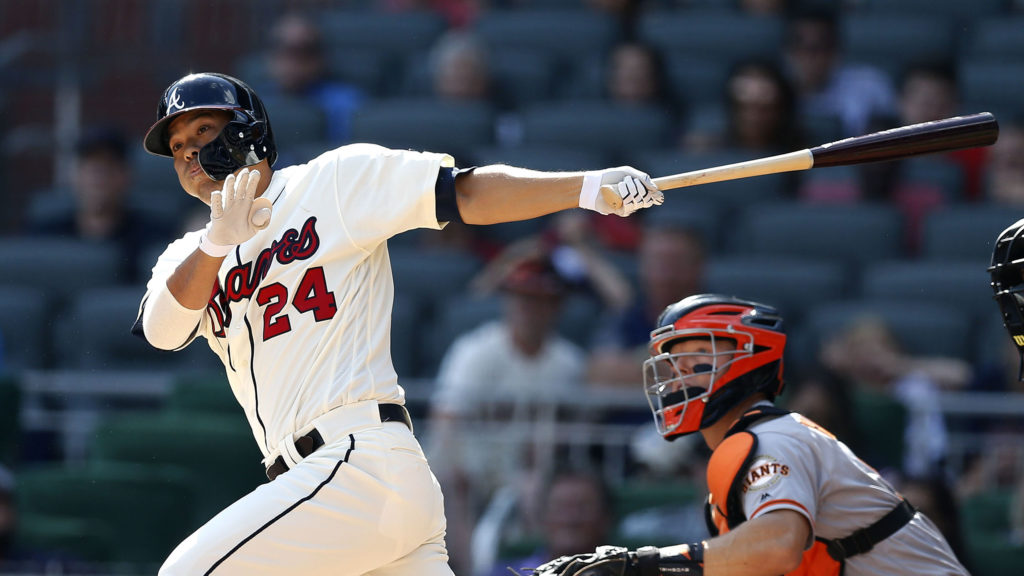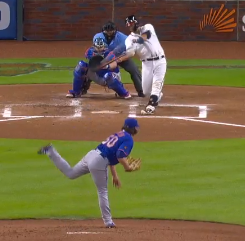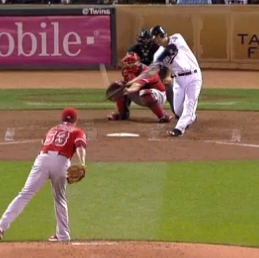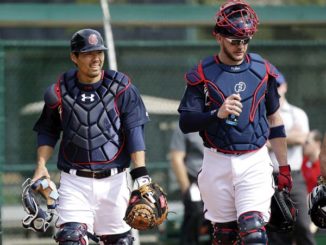
Last September, I wrote about Kurt Suzuki’s historical uniqueness. His newfound proclivity for both home runs and being hit by pitches was the result, I theorized, of a more aggressive batting approach. I thought it’d be interesting to see if he has continued that trend in 2018.
Suzuki’s slash-line stats this year (.272/.331/.470) aren’t quite as good as last year (.283/.351/.536), but that’s to be expected. Even a change in approach was unlikely to yield 19 HRs in 309 plate appearances. But he’s still a good hitter, posting a 117 wRC+ so far. While that’s not up to last year’s 129 mark, it’s the 2nd best total of his career. Here’s how he’s doing it.
Kurt Suzuki began MLB life as an extremely patient hitter. In 2008, his first full season, he swung at 40.6% of pitches, which was the 21st lowest rate in baseball. He swung at just 60% of pitches inside the strike zone, the 19th lowest rate that year. It wasn’t a terrible approach, either – he posted wRC+ totals in the 90s fairly consistently early on, which isn’t bad for a catcher. This more or less stayed the same throughout his entire pre-Atlanta career. When he signed with the Braves, he had a career swing rate of 44.2%, an in-zone swing rate of 62.5%, and an out-of-zone rate of 25.5%. Pitchers knew he would patiently ignore strikes down the middle, so they hammered the zone. Of the 86 players who batted at least 4500 times from 2007-2016, none saw a greater rate of pitches inside the strike zone than Kurt Suzuki’s 50.4%.
When Suzuki arrived in Atlanta, he became a different hitter. In 2017, he swung at 52.8% of pitches, a career high. He swung at a career high number of pitches both inside the zone (70.1%) and outside (37.6%). This guy was 33. The book had been written. He’s not supposed to defy it now, at age 33. But that’s what happened, and it led to Suzuki’s best season of his career.
So what’s happened with the swing rates in 2018? He’s even more aggressive, swinging at 53.7% of pitches, but in a way that indicates an even better grasp of the strike zone. He’s swinging at 73.5% of pitches inside the zone now, compared to 33.3% outside. He’s taking an approach that worked and he’s improving on it, keeping the aggression but utilizing it better inside the strike zone.
Here is a still from that video, side by side (sort of) with a still from a double Suzuki hit in 2015:
You can see the change in the way he’s positioned when he makes contact. Because he’s more aggressive, his inside shoulder is now fully turned. He’s pulling 58% of batted balls this year. In 2015, he pulled 41%. Now, he certainly still has moments where he looks like his old self, and he certainly had some moments back in 2015 where he hit pull-side home runs just like he does today. Baseball players are inconsistent because they happen to be human. But the left image has increased in frequency, while he’s decreased swings like the one on the right (even though it still led to a double).
So why aren’t his stats as good? Well, pitchers have learned their lesson. They’re justifiably more afraid to go into the zone on Suzuki, who has hit fastballs remarkably well since arriving in Atlanta. His strikeout rate is down to 10.1%, lower than his career average! The guy remade himself into an aggressive hitter to tap into his power, and he somehow got better at making contact in the process. That’s incredible.
It also helps that he’s hitting the ball upward. Last year, Suzuki had a launch angle of 18.2°, which ranked 29th in the game, placing him near players like Mike Trout (31st) and Justin Turner (26th). This season, it’s up to 19.0°, now ranking 20th in the game. For a player who doesn’t hit the ball excessively hard – his average exit velocity is slightly below league average – that upward trajectory goes a long way in creating round-trippers:

It’s rare to see a baseball player completely change himself at any point in his career, much less at age 33. However, that’s what Suzuki did last year. He has responded in 2018 in the best way – fine-tuning what is clearly a winning approach, and using it to his benefit as he gets older. It’s been fun to watch.






Leave a Reply